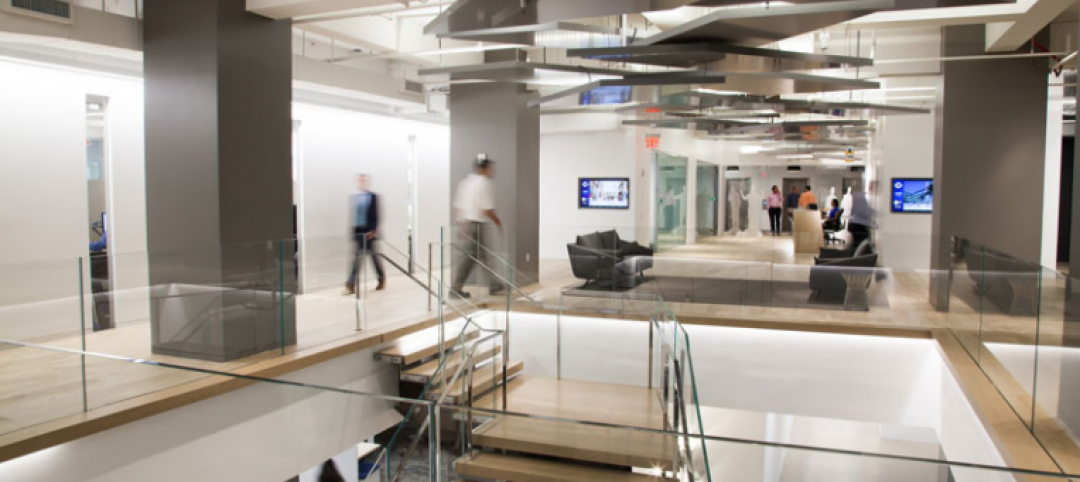|
In 2010, the AIA/NCARB Internship and Career Survey of emerging professionals took a snapshot of young designers during a time ofintense economic contraction, when they were often the first to suffer. But in the two years since, emerging professionals have begun experiencing a rebound, with higher employment levels, more young designers getting licensed, and any remaining unemployment becoming, in most cases, mercifully short. The 2012 Internship and Career Survey, commissioned jointly by the AIA and NCARB, and conducted by The Rickinson Group, contains a wealth of information on the experiences of emerging professionals as they go through IDP, take the ARE, become licensed, and obtain their first jobs. This survey has been completed five times since 2003, most recently inthe fourth quarter of 2012. Path to licensure: IDP and ARE The survey found that there has been little change in the length of time required to complete IDP over the last five years, with nearly two-thirds of respondents (62 percent) in 2012 reporting that it took them three to five years to complete. In addition, the majority of interns who have not yet completed IDP anticipate that it will take the same amount of time (55 percent). Twenty percent of those who haven’t yet started IDP think it will take them less than three years to complete; in contrast, only 13 of those who have already completed IDP reported that it took less than three years to complete. And just over half of respondents said that they were able to complete all 17 NCARB experience-area requirements at one firm, up 4 percentage points from 2010 and up 8 percentage points from 2005. Nearly 60 percent of survey respondents indicated that they have taken at least some divisions of the ARE, with the most commonly cited motivations for taking the exam being career enhancement (83 percent), personal goal fulfillment (80 percent), competitive advantage in the down economy (63 percent), and a slim majority citing competitive advantage in their firm. Forty percent of interns currently taking the ARE are taking it concurrently with IDP, an increase of 3 percentage points from 2010. In addition, female and younger interns are also more likely to be taking the two concurrently, as are interns on a traditional career path. Just over two-thirds of interns anticipate that it will take them one to four years to complete the ARE, comparable to the share of respondents who reported that it did indeed take that long. For the 41 percent of respondents who have not yet started or do not plan to ever take the ARE, the most commonly cited reasons for not doing so were a lack of time to prepare (56 percent) and cost (54 percent). Seven in 10 survey respondents reported that they intend to become licensed. This is down substantially from 2010, when 83 percent indicated that they planned to obtain licensure, because a larger share of interns are already licensed. (Twenty-five percent of interns were licensed in 2012, as compared to only 11 percent in 2010). The share of respondents who say that they do not intend to become licensed is unchanged from previous editions of the survey, at just 5 percent. Employment levels rising As in past versions of the survey, the vast majority of respondents in 2012 reported that they have already sought their first professional architecture position. And more than three quarters of respondents (78 percent) reported that they were currently engaged in professional architecture work, a notable 8 percent increase from 2010. In addition, just 6 percent reported that they were not currently employed, in contrast to 17 percent two years ago. Respondents also rated the many factors that went into selection of their place of employment, with the top three consisting of opportunities for growth (rated as important by 76 percent of respondents), location, and level of responsibility. Personal/family considerations were more important to respondents who were over 30, while location and reputation of the firm were more important to recently licensed architects. For respondents not currently working in a professional architecture position, the top two reasons were that they were laid off from their previous job (36 percent) and that the path to licensure is too long/difficult (35 percent). While just over half of respondents indicated that they have been laid off in the past, the duration of unemployment after the layoff has declined dramatically in the last two years. In 2010, only 52 percent were able to find a new job in a year or less; last year 64 percent reported that unemployment lasted 12 months or less. Just 14 percent said that they still haven’t found another job, less than half of the rate from two years ago. In addition, nearly seven in 10 respondents who left positions due to layoffs or other economic concerns think they are likely to remain in the architecture profession. Many firms offer interns support as they work to complete the ARE. The most common services include a firm-maintained library of study materials, firm payment of ARE fees, and paid time off to take the ARE. Approximately one-third of firms offer at least one of each. The vast majority of interns think that paid ARE fees are important forms of monetary support their firm can provide, along with a raise upon licensure, and paid professional organization dues. Overall, the most effective incentives to becoming registered are a salary increase, a bonus upon registration, and a bonus upon completion of the ARE. While 60 percent of respondents rated compensation as worse than they had anticipated, the majority has found that professional satisfaction with work, the type of work they’re doing, and hours worked are the same as or better than they had expected. This survey received 10,003 usable responses; 41 percent of respondents were women, 37 percent under age 30, and an additional 29 percent between ages 30–34. |
||
(http://www.aia.org/practicing/AIAB098254?mid=1298826&rid=14899235&cid=ITTestCampaign&sid=LyrisListManager&lid=aiarchitect-nonmembers)
Related Stories
Multifamily Housing | Aug 24, 2017
Storage units, lounges most popular indoor and outdoor amenities in multifamily developments
Tenants and condo owners crave extra space for their stuff. Most developers are happy to oblige.
Green | Aug 24, 2017
Business case for WELL still developing after first generation office fitouts completed
The costs ranged from 50 cents to $4 per sf, according to a ULI report.
Healthcare Facilities | Aug 24, 2017
7 design elements for creating timeless pediatric health environments
A recently published report by Shepley Bulfinch presents pediatric healthcare environments as “incubators for hospital design innovation.”
BD+C University Course | Aug 23, 2017
AIA course: New steel systems add strength and beauty
Advances in R&D are fostering new forms of structural and aesthetic steel.
Market Data | Aug 23, 2017
Architecture Billings Index growth moderates
“The July figures show the continuation of healthy trends in the construction sector of our economy,” said AIA Chief Economist, Kermit Baker.
Architects | Aug 21, 2017
AIA: Architectural salaries exceed gains in the broader economy
AIA’s latest compensation report finds average compensation for staff positions up 2.8% from early 2015.
Sports and Recreational Facilities | Aug 18, 2017
Video: Designing the ideal rugby stadium
HOK invited four world-class rugby players into its London studio to discuss what they would like to see in the rugby stadiums of the future.
Architects | Aug 16, 2017
Staffelbach joins DLR Group
The firm will be merging operations immediately with full integration and the name change to DLR Group| Staffelbach effective October 2.
Multifamily Housing | Aug 9, 2017
Related Companies unveils plans for One Hudson Yards luxury rental residences
The 33-story tower will be positioned on the High Line with views of the Hudson River and downtown Manhattan.


















